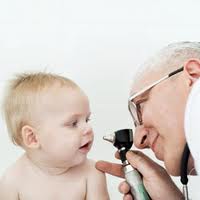Fever of infants is a distressing scenario for any parent. Rectal temperature that is more than 100.4 degrees Fahrenheit is an abnormal temperature for an infant. Fever is a way the body defends itself from any infections. Febrile seizures are common complications for any fever but it does not cause a weakening effect. Infants with fever will have no appetite to eat or drink water. They are irritated and cannot sleep well. Fever in infants should be closely monitored in order to minimize the risk of febrile seizures.
[youtube url=”https://www.youtube.com/watch?v=QTepnnKwHcA”]Causes
- Fever in infants can be caused by an infection in the umbilical cord, infection of the respiratory tract and gastrointestinal tract infection.
- An infection in the ear, urinary tract or brain can also cause fever in infants.
- Infants are susceptible to infections because their immune system is not yet fully developed and sometimes bacterial infection can happen during the time of birth or after birth usually if proper hygiene is not well maintained.
- Fever is common after vaccination especially the DPT vaccination and can last for 1-2 days and eventually subsides without any treatment. On the other hand, if there is high fever, it is best to seek medical help.
Symptoms
- The infant is irritable and crying
- Body feels severely hot caused by the high temperature
- The baby does not have appetite, becomes picky and cries all the time.
- Loss of sleep
- Difficulty in breathing

Fever is common after vaccination especially the DPT vaccination and can last for 1-2 days and eventually subsides without any treatment. - Flushed face and lethargic
- Nausea, vomiting and diarrhea
- Barking cough and runny nose
- Stiff neck
- Excessive perspiration
Treatment
- Encourage the infant to drink more fluids such as apple juice or fresh lime juice diluted with water.
- If the child is vomiting, let him/her suck on popsicles in order to help minimize the vomiting and nausea.
- Sponge the baby using lukewarm water to the lessen fever. Take a bowl of lukewarm water, then immerse a clean washcloth or a piece of cloth and rub the body of the child gently using the wet cloth. Pat the body of the child dry.
- Let the baby stay in a room with cool temperature. Make sure that it should not be too hot or too cold.
- Avoid covering the child with too much clothing in order to help lower the body temperature.
- Place a cool washcloth on the forehead of the baby in order to help provide relief for the baby and also helps in lowering the body temperature.
- Provide the baby prescribed over-the-counter pain medication that contains ibuprofen or acetaminophen in order to help lessen the fever.
- Stay inside the house until the fever is totally healed and if possible avoid visitors and engaging in vigorous activities. Read stories, sing songs and play with blocks with the baby.
